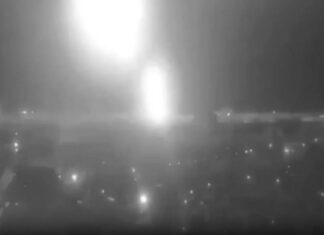Northrop Grumman has officially introduced its latest optionally unmanned aircraft, the Firebird. The new aircraft is positioned to deliver multi-intelligence products to military users on the ground, providing real-time high-definition full-motion video (FMV), electro-optical infrared (EOIR) and synthetic aperture radar (SAR) imagery, monitor communications signals (COMINT). Firebird is set for an operational demonstration in an optionally-piloted configuration from May 23 – June 3, 2011, during Empire Challenge 2011, a military exercise run by U.S. Joint Forces Command.
While U.S. services already operate a number of unmanned platforms for these roles, the new FireBird, Northrop Grumman has not yet been able to tap this market, as it lacked a true medium-altitude long-endurance platform of its own. “Firebird addresses future budgetary constraints by combining the best of our piloted and unmanned ISR systems into a single solution ready for a variety of ISR missions” Said Paul Meyer, vice president and general manager of advanced programs and technology for Northrop Grumman Aerospace Systems. “We’ve harnessed the innovative techniques of Northrop Grumman and Scaled Composites to deliver an unprecedented information-gathering capability.” Meyer said. As lead for the Firebird program, Northrop Grumman developed the unmanned systems architecture, control and mission systems. The company chose Scaled Composites to design, build and test the aircraft – with first flight occurring just 12 months after the initial concept discussions.
Unlike most of the competing unmanned MALE platforms, FireBird is designed to be flown as a manned or unmanned aircraft. This capability enables operations in unrestricted areas, supporting transition flights as well as supporting training exercises. From inception, Firebird was designed to be flown as a manned or unmanned aircraft and can be quickly modified for either option. Northrop Grumman refers to this as being ‘self-deployable.’ Other systems, such as Predator and Reaper, are broken down and reassembled once they arrive on station.





















